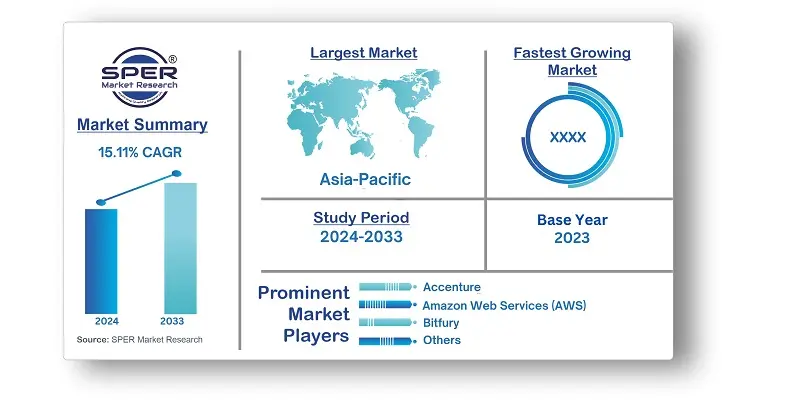
Japan Fintech Market Growth, Size, Trends, Share, Revenue, Competition and Future Outlook
Japan Fintech Market Size- By Deployment Mode, By Technology, By Application, By End User- Regional Outlook, Competitive Strategies and Segment Forecast to 2033
| Published: Jun-2024 | Report ID: BFSI2420 | Pages: 1 - 104 | Formats*: |
| Category : BFSI | |||
- March 2023: MANGOPAY and PayPal expanded their long-standing strategic agreement to give marketplaces quick access to PayPal's global payment capabilities.
- May 2022: Mastercard announced a partnership with Synctera, a well-known FinTech banking provider. The companies teamed to provide account validation solutions for Synctera-powered FinTechs through Mastercard's open banking platform.
- March 2022: Envestnet collaborated with Productfy, a creator of a business-to-business financial platform. With this agreement, fintech innovators on Productfy's platform will have direct access to Envestnet through a single interface.


| Report Metric | Details |
| Market size available for years | 2020-2033 |
| Base year considered | 2023 |
| Forecast period | 2024-2033 |
| Segments covered | By Deployment Mode, By Technology, By Application, By End User |
| Regions covered | Kanto Region, Kinki Region, Central/ Chubu Region, Kyushu-Okinawa Region, Tohoku Region, Chugoku Region, Hokkaido Region, Shikoku Region |
| Companies Covered | Accenture, Amazon Web Services (AWS), Bitfury, International Business Machines Corporation, Microsoft Corporation, Oracle Corporation, Ripple Lab Inc. |
- Banks and Financial Institutions
- Corporates (large corporations and SMEs)
- Government Agencies and Regulators
- Investors (Venture Capitalists, Private Equity firms, Angel Investors)
- Merchants and Retailers
- Startups and Entrepreneurs
- Technology Providers (Software companies, IT firms)
- Unbanked and Underbanked Consumers
- Wealth Management Firms and Asset Managers
| By Deployment Mode: |
|
| By Technology: |
|
| By Application: |
|
| By End User: |
|
- Japan Fintech Market Size (FY’2024-FY’2033)
- Overview of Japan Fintech Market
- Segmentation of Japan Fintech Market by Deployment Mode (On-premises, Cloud-based)
- Segmentation of Japan Fintech Market by Technology (Application Programming Interface, Artificial Intelligence, Blockchain, Robotic Process Automation, Data Analytics, and Others)
- Segmentation of Japan Fintech Market by Application (Payment and Fund Transfer, Loans, Insurance and Personal Finance, Wealth Management, and Others)
- Segmentation of Japan Fintech Market by End User (Banking, Insurance, Securities, and Others)
- Statistical Snap of Japan Fintech Market
- Expansion Analysis of Japan Fintech Market
- Problems and Obstacles in Japan Fintech Market
- Competitive Landscape in the Turkey Electric Vehicle Market
- Impact of COVID-19 and Demonetization on Japan Fintech Market
- Details on Current Investment in Japan Fintech Market
- Competitive Analysis of Japan Fintech Market
- Prominent Players in the Japan Fintech Market
- SWOT Analysis of Japan Fintech Market
- Japan Fintech Market Future Outlook and Projections (FY’2024-FY’2033)
- Recommendations from Analyst
1.1. Scope of the report1.2. Market segment analysis
2.1. Research data source2.1.1. Secondary Data2.1.2. Primary Data2.1.3. SPER’s internal database2.1.4. Premium insight from KOL’s2.2. Market size estimation2.2.1. Top-down and Bottom-up approach2.3. Data triangulation
4.1. Driver, Restraint, Opportunity and Challenges analysis4.1.1. Drivers4.1.2. Restraints4.1.3. Opportunities4.1.4. Challenges4.2. COVID-19 Impacts of the Japan Fintech Market.
5.1. SWOT Analysis5.1.1. Strengths5.1.2. Weaknesses5.1.3. Opportunities5.1.4. Threats5.2. PESTEL Analysis5.2.1. Political Landscape5.2.2. Economic Landscape5.2.3. Social Landscape5.2.4. Technological Landscape5.2.5. Environmental Landscape5.2.6. Legal Landscape5.3. PORTER’s Five Forces5.3.1. Bargaining power of suppliers5.3.2. Bargaining power of buyers5.3.3. Threat of Substitute5.3.4. Threat of new entrant5.3.5. Competitive rivalry5.4. Heat Map Analysis
6.1. Japan Fintech Market Manufacturing Base Distribution, Sales Area, Product Type6.2. Mergers & Acquisitions, Partnerships, Product Launch, and Collaboration in Japan Fintech Market
7.1. Japan Fintech Market Size, Share and Forecast, By Deployment Mode, 2020-20267.2. Japan Fintech Market Size, Share and Forecast, By Deployment Mode, 2027-20337.3. On-premises7.4. Cloud-based
8.1. Japan Fintech Market Size, Share and Forecast, By Technology, 2020-20268.2. Japan Fintech Market Size, Share and Forecast, By Technology, 2027-20338.3. Application Programming Interface8.4. Artificial Intelligence8.5. Blockchain8.6. Robotic Process Automation8.7. Data Analytics8.8. Others
9.1. Japan Fintech Market Size, Share and Forecast, By Application, 2020-20269.2. Japan Fintech Market Size, Share and Forecast, By Application, 2027-20339.3. Payment and Fund Transfer9.4. Loans9.5. Insurance and Personal Finance9.6. Wealth Management9.7. Others
10.1. Japan Fintech Market Size, Share and Forecast, By End User, 2020-202610.2. Japan Fintech Market Size, Share and Forecast, By End User, 2027-203310.3. Banking10.4. Insurance10.5. Securities10.6. Others
11.1. Japan Fintech Market Size and Market Share
12.1. Japan Fintech Market Size and Market Share By Region (2020-2026)12.2. Japan Fintech Market Size and Market Share By Region (2027-2033)12.3. Kanto Region12.4. Kinki Region12.5. Central/ Chubu Region12.6. Kyushu-Okinawa Region12.7. Tohoku Region12.8. Chugoku Region12.9. Hokkaido Region12.10. Shikoku Region
13.1. ACCENTURE13.1.1. Company details13.1.2. Financial outlook13.1.3. Product summary13.1.4. Recent developments13.2. AMAZON WEB SERVICES (AWS)13.2.1. Company details13.2.2. Financial outlook13.2.3. Product summary13.2.4. Recent developments13.3. BITFURY13.3.1. Company details13.3.2. Financial outlook13.3.3. Product summary13.3.4. Recent developments13.4. INTERNATIONAL BUSINESS MACHINES CORPORATION13.4.1. Company details13.4.2. Financial outlook13.4.3. Product summary13.4.4. Recent developments13.5. MICROSOFT CORPORATION13.5.1. Company details13.5.2. Financial outlook13.5.3. Product summary13.5.4. Recent developments13.6. ORACLE CORPORATION13.6.1. Company details13.6.2. Financial outlook13.6.3. Product summary13.6.4. Recent developments13.7. RIPPLE LAB INC13.7.1. Company details13.7.2. Financial outlook13.7.3. Product summary13.7.4. Recent developments13.8. Others
SPER Market Research’s methodology uses great emphasis on primary research to ensure that the market intelligence insights are up to date, reliable and accurate. Primary interviews are done with players involved in each phase of a supply chain to analyze the market forecasting. The secondary research method is used to help you fully understand how the future markets and the spending patterns look likes.
The report is based on in-depth qualitative and quantitative analysis of the Product Market. The quantitative analysis involves the application of various projection and sampling techniques. The qualitative analysis involves primary interviews, surveys, and vendor briefings. The data gathered as a result of these processes are validated through experts opinion. Our research methodology entails an ideal mixture of primary and secondary initiatives.



Frequently Asked Questions About This Report
PLACE AN ORDER
Year End Discount
Sample Report
Pre-Purchase Inquiry
NEED CUSTOMIZATION?
Request CustomizationCALL OR EMAIL US
100% Secure Payment






Related Reports
Our Global Clients
Our data-driven insights have influenced the strategy of 200+ reputed companies across the globe.




















